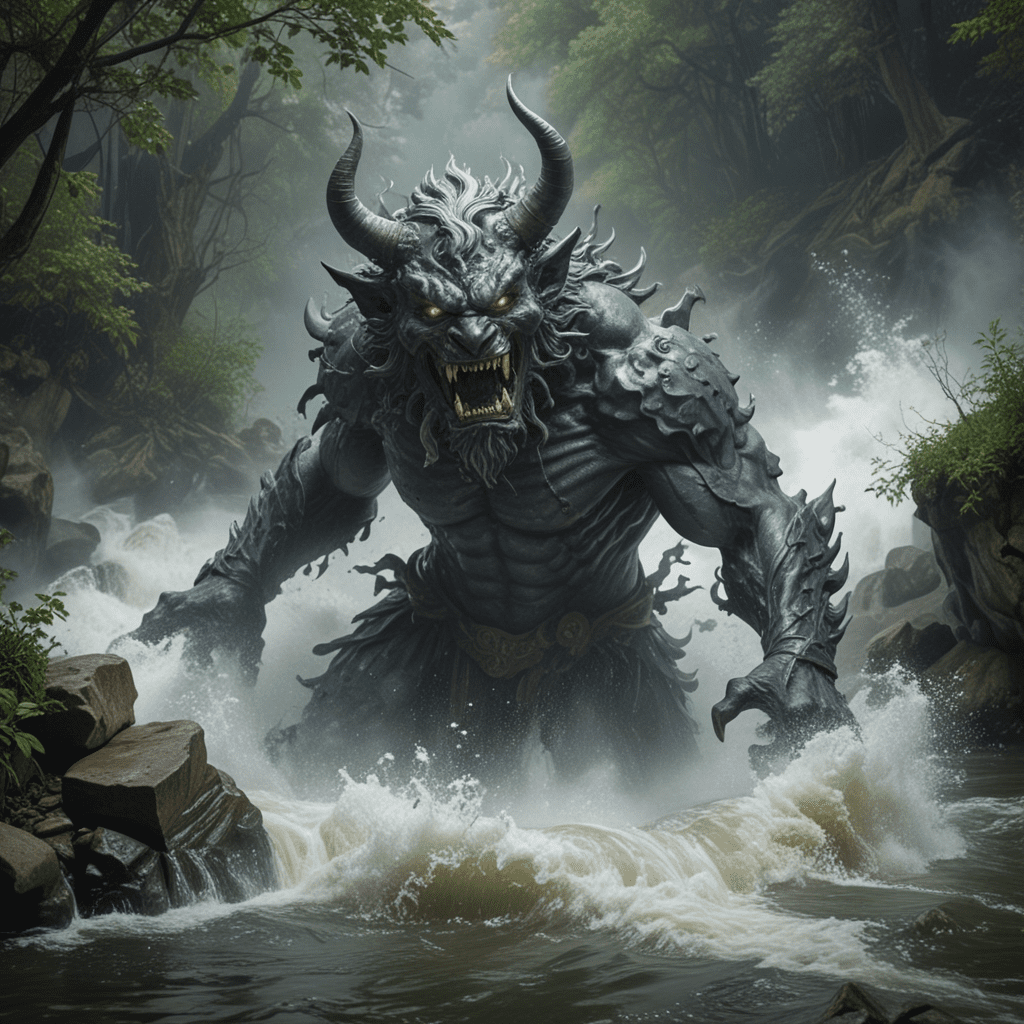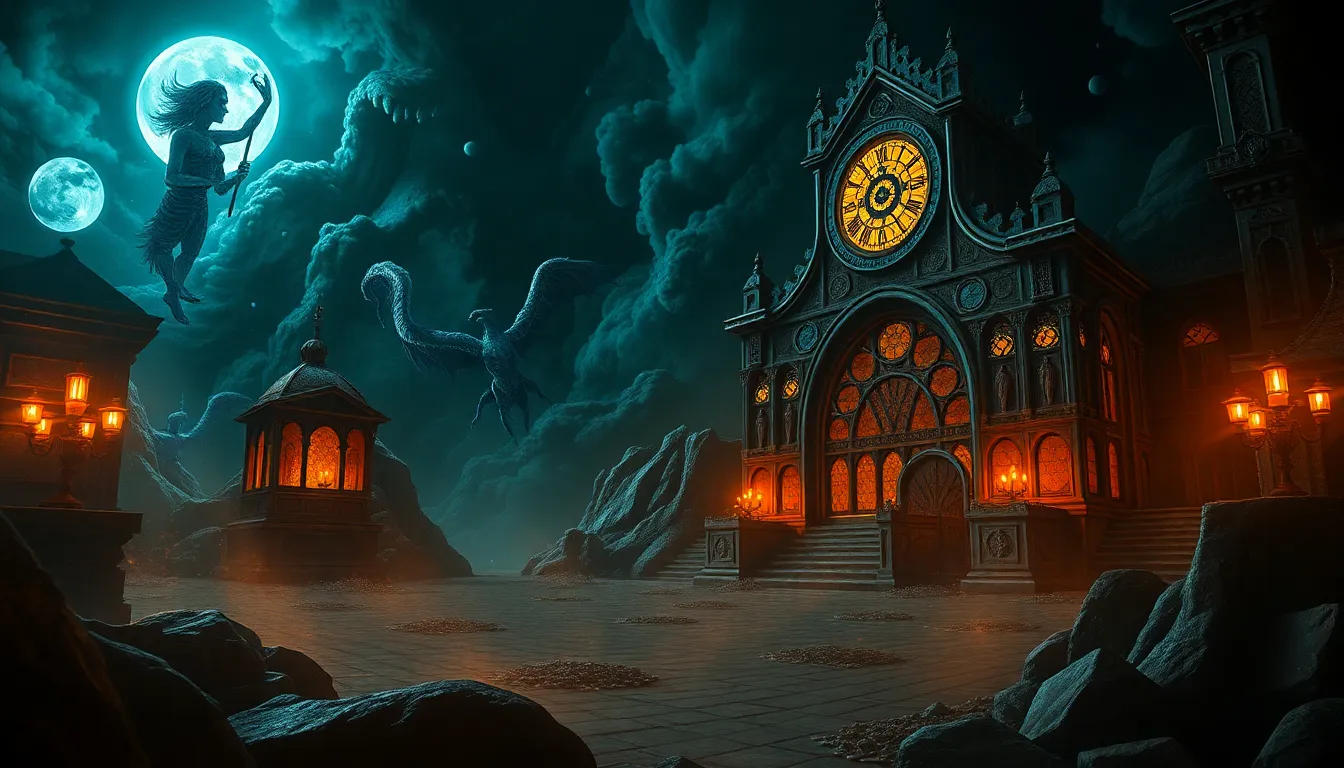The Myth of the Gagoze: The Demon of the Kiso River in Japanese Legends
The Gagoze, a legendary creature entrenched in Japanese folklore, has captivated the imaginations of generations with its enigmatic presence. Its ominous reputation as a malicious demon lurking within the depths of the Kiso River has woven a tapestry of fear and intrigue into the cultural fabric of Japan. Join us as we delve into the mythos surrounding the Gagoze, exploring its origins, physical attributes, and the chilling encounters that have shaped its enduring legacy.
Origins and Legends of the Gagoze Demon
The exact origins of the Gagoze remain shrouded in mystery, lost to the annals of time. However, a tapestry of legends weaves a compelling narrative surrounding its genesis. Some tales trace its existence to the vengeful spirit of a scorned woman, while others whisper of a malevolent deity that was banished to the earthly realm. Regardless of its origins, the Gagoze emerged as a formidable figure within Japanese mythology, its name synonymous with terror and the unknown.
Physical Characteristics and Fearsome Appearance
The Gagoze is often portrayed as a grotesque and terrifying creature. Its physical form is described as akin to that of a giant snake, with scales that shimmer in iridescent hues. Its massive jaws are lined with rows of razor-sharp teeth, capable of tearing through flesh with ease. The creature's eyes are said to burn with an eerie, otherworldly glow, piercing through the darkness and instilling fear in the hearts of those who gaze upon them.
The Kiso River: Home of the Gagoze
The Gagoze is inextricably linked to the Kiso River, a waterway that meanders through the mountainous regions of central Japan. Legend has it that the demon resides within the river's murky depths, preying upon unsuspecting travelers who dare to cross its path. The Kiso River, with its treacherous currents and unpredictable waters, serves as a fitting backdrop for the sinister legend of the Gagoze, adding an element of realism to the tales surrounding its malevolent presence.
6. Rituals and Appeasements for the Gagoze
In the face of the Gagoze's fearsome reputation, various rituals and appeasement practices have emerged in Japanese culture to ward off its malevolence. Offerings of food and sake are often made to the river, accompanied by prayers and incantations. Special rituals involving the use of sacred talismans and protective amulets are also believed to shield travelers from the demon's wrath. By adhering to these traditions, people seek to appease the Gagoze and ensure safe passage along the Kiso River.
7. The Symbolism of the Gagoze in Japanese Culture
Beyond its terrifying presence, the Gagoze holds significant symbolic meaning within Japanese culture. It represents the unpredictable and often treacherous nature of the natural world. The river's swift currents and hidden dangers mirror the unforeseen challenges and perils that life can present. The Gagoze also embodies the fear of the unknown, reminding people of the unseen forces that may lurk beneath the surface. By acknowledging and respecting the Gagoze, the Japanese express their reverence for nature's power and their understanding of its potential dangers.
8. Literary and Artistic Depictions of the Gagoze
The Gagoze has captivated the imaginations of creative minds throughout Japanese history. It has featured prominently in countless works of literature, folklore, and art. In traditional woodblock prints, the Gagoze is often portrayed as a menacing serpent-like creature, its eyes blazing and its fangs bared. Modern interpretations have taken various forms, including anime, manga, and even video games, each adding a unique perspective to the legend of the Kiso River demon.
9. Demystifying the Gagoze: Unraveling the Truth
Despite its enduring presence in Japanese folklore, the Gagoze remains an enigmatic figure. There is no definitive evidence to support its existence beyond the realm of myth and legend. Some scholars suggest that the stories surrounding the Gagoze may have originated from actual encounters with dangerous wildlife, such as crocodiles or large snakes, that were common in the Kiso River during ancient times. By attributing these encounters to a supernatural entity, people may have sought to make sense of the unknown and cope with the inherent dangers of their environment.
10. Conclusion: The Enduring Legacy of the Gagoze Legend
The Gagoze, a creature born from the depths of Japanese folklore, continues to captivate and intrigue generations. Its enduring legacy as the demon of the Kiso River serves as a testament to the power of imagination and the cultural significance of myths and legends. Through its terrifying presence, the Gagoze reminds us of the unpredictable nature of life and the importance of respecting the forces that shape our world. Whether one believes in its literal existence or not, the Gagoze remains an integral part of Japanese culture, embodying the fears, beliefs, and aspirations of a nation united by stories of its enigmatic past.
Frequently Asked Questions
Q: Is the Gagoze a real creature?
A: The Gagoze is a mythical creature from Japanese folklore and there is no scientific evidence to support its existence.
Q: Where does the Gagoze live?
A: According to legend, the Gagoze resides within the depths of the Kiso River in central Japan.
Q: What does the Gagoze look like?
A: The Gagoze is often described as a giant serpent-like creature with iridescent scales, razor-sharp teeth, and piercing eyes.
Q: Why is the Gagoze considered a demon?
A: In Japanese mythology, the Gagoze is said to be a malevolent spirit that preys upon unsuspecting travelers who cross its path.
Q: Are there any rituals to protect against the Gagoze?
A: In Japanese folklore, people offer food, sake, and prayers to the river to appease the Gagoze and ensure safe passage.


